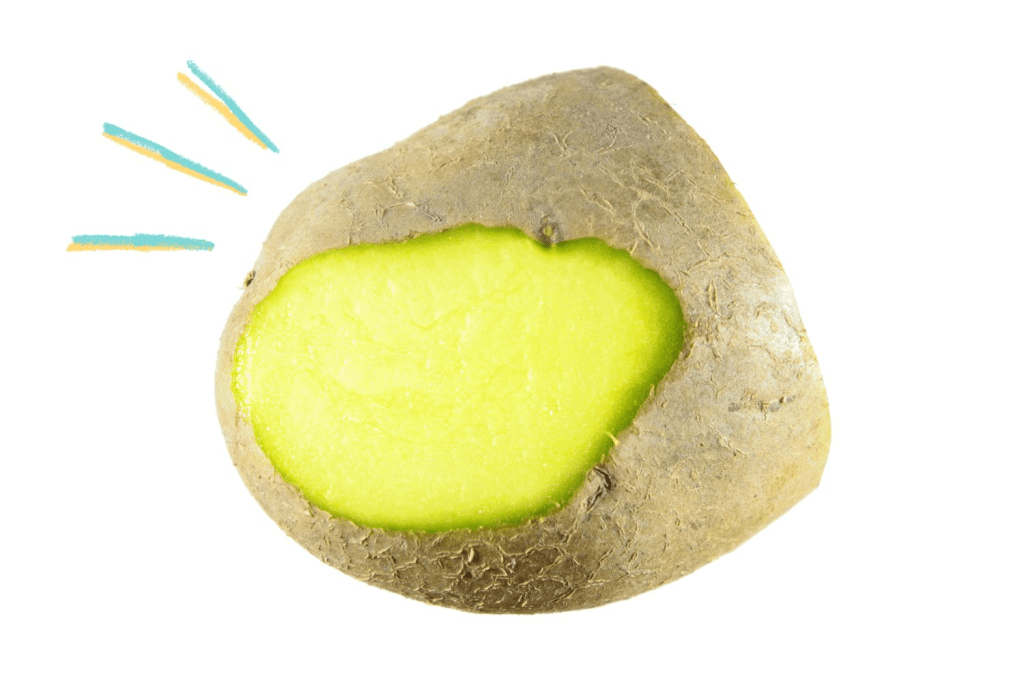You know you have potatoes in the pantry, and you have the perfect recipe in mind for using them. That is, until you reach for the potatoes and notice that some of them have begun to turn green.
You’re probably wondering if you should toss the green potatoes, or if you can peel away the green and continue on with your dinner plan.
:max_bytes(150000):strip_icc():format(webp)/Green_Potatoes_008-4ae122fc2a19424abc17fb9fff3c2989.jpg)
The answer is maybe. Green potatoes are not recommended to eat, but it may be possible to salvage them to use for specific dishes.
Keep reading to find out why potatoes turn green and why it’s not a good idea to eat a green potato. Plus, learn the best way to store potatoes to prevent them from turning green in the first place.
Can You Eat Green Potatoes?
The answer: It depends. But you definitely don’t want to eat the parts of the potato that have turned green.
“The green areas contain compounds that cause illness and off tastes,” says Jay Weinstein, chef-instructor at the Institute of Culinary Education (ICE).
If you’re wondering, can you cut off the green parts and still use the potato, the answer is yes.
“You can salvage potatoes that have partial green areas,” says Weinstein. “Peel the skin and cut off the discolored parts.”
But you won’t want to use these potatoes for some potato recipes. “Don’t prepare them as bakers or whole boiled,” he says. “The unaffected parts are fine for mashed, fried, and other dishes.”
But not all chefs would recommend using a potato that is green or has some green spots. “Honestly, I would avoid using a potato that has even partially turned green, as this is a sign that the levels of glycoalkaloids, a harmful toxin to humans, have increased,” shares Louis Bayla, executive chef at Grain & Cane.

Why Do Potatoes Turn Green?
“Sunlight exposure causes the potato skin to turn green,” says Weinstein.
Bayla explains, “This is due to the formation of chlorophyll, which is found in all green plants.”
Chlorophyll is harmless, but it’s an indicator that the potato’s chemistry is changing, explains Weinstein. “When the green appears, a toxic compound called solanine also develops, [and] it can cause nervous disorders in extreme cases,” he says.32
How Can You Prevent a Potato From Turning Green?
If you want to ensure potatoes don’t turn green, place them in an area where they won’t receive any sunlight. “Prevent greening and spoilage by keeping potatoes out of sunlight,” says Weinstein.
Keeping them in a cool area will also prevent sprouting.
What Is the Best Way To Store Potatoes?

Potatoes are best kept in a dry, cool spot and away from sunlight. “The ideal place to store potatoes is in a root cellar, where the temperature is between 45°F and 55°F , and it’s dark,” says Bayla. “If you don’t have a root cellar, I suggest storing your potatoes in a ventilated bag in the pantry and without any sun.”
Potatoes also need air circulation to stay fresh. “Don’t close the bag, as the potatoes need air movement to help prevent them from going bad,” adds Bayla.
If you’re thinking that the refrigerator is a good place for potatoes, think again. The cold temperatures will affect the potato and not in a good way.
“In the cold of the refrigerator, starches in the potatoes convert into sugars,” explains Weinstein.3 “That diminishes their ability to become fluffy mashed potatoes, crispy fries, or even normal-tasting baked potatoes.”
Bayla also shares two more storage tips: ”Only keep [potatoes] for one to two weeks. And be sure to keep them away from onions!”